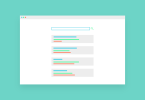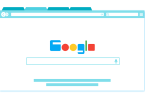There is a misconception among inexperienced marketers that SEO is about keywords and link building. Although these are key aspects of your strategy, SEO goes way beyond them. Google takes into account many factors when ranking your site, and user-friendly design is the most important of them. Here’s how user-friendly design and search engine optimization are related and how to combine them strategically.
SEO is all about user experience
Google has evolved rapidly over the past few years with the goal of constantly improving user experience. To separate the wheat from the chaff and provide researchers with high-quality, reliable, and relevant results, the search engine made several changes to SERPs and introduced rigorous algorithm updates. RankBrain is a great example of how important usability is to Google.
RankBrain’s impact on your rankings
RankBrain is the third most important ranking factor. Focusing on behavioral metrics, such as bounce rate, organic click-through rate, pages per session, and dwell time, Rank Brain tells Google if visitors enjoy navigating your site. The fact that the user easily goes from one page to another, clicks on your links, spends a lot of time on your pages, and then returns to your site again shows that your site is an easy-to-use resource.
On the other hand, if the user leaves your site without taking any further action, immediately returns to the search results after landing on the page and never returns, it is telling Google that your site is either poorly optimized or irrelevant to your users.
The user-friendly design is all about making users happy, as well as SEO
RankBrain is just one of many examples proving that usability and SEO share common goals. You probably remember that targeting and optimizing exact-match keywords was one of the most popular ways to rank high in the past. Today, in order to get in front of the right searchers and rank high in the SERPs, you have to put yourself in their shoes. In other words, you need to understand the purchase intent and analyze how they make the search queries.
One example is optimizing your voice search, which has become an important aspect of your search engine optimization strategy, according to New York-based search engine optimization agency Four Dots. Google’s goal is to provide researchers with information that answers their questions and solves their problems. So, to appear in the voice search results, you need to optimize your content for conversational, question-based, and longer-term keywords.
The next step is to design your website. The goal of search engine optimization (SEO) is to help you rank highly on Google and be seen more. But, when a user lands on your site, usability is here to help them find answers to their questions faster, highlight your professionalism, and increase brand awareness.
Implementing SEO and User-Friendly Website Design: Best Practices
The above examples clearly show that SEO efforts cannot be maximized without considering user experience. On the other hand, designing your site from scratch and not optimizing it for search engines is also a big mistake. These two aspects of your site go hand in hand and should be combined from the start. For this very reason, here are some essential steps you should take.
Page load time optimization
Although it has always been one of the most prominent signals of ranking in Google, page speed has become even more important with the latest speed update. And the statistics confirm my point. For example, did you know that just one second of page load delay can reduce page views by 11%? Secondly, poor page load times also hurt your conversion rates and overall user experience.
If your site doesn’t load in 2 seconds or less, almost half of your visitors will leave. Not surprisingly, this affects your retention rate as well. Now, there are several ways to improve your website speed, including:
- Choose a reliable hosting plan
- Choose high-quality images while reducing their size by compressing and cropping them
- Use browser cache
- Remove multimedia formats autoplay
- Invest in a content delivery network
- Use lazy loading
- Simplify your website architecture
Your user-friendly design is how you layout your site pages. From an SEO standpoint, a good website structure means that Google can easily find and index your pages, while link juice flows smoothly from high-authority pages to low-authority pages. The structure of your site affects your visitors, most of whom use the navigation menu to find the right page.
That’s why you need to streamline your website navigation, write informative menu tags, add engaging CTAs, and make sure your pages are never more than 4 clicks away from the homepage.
Invest in website responsiveness
With the number of mobile users on the rise, optimizing your site for mobile is more important than ever. After submitting first indexing to Google (yes, Google now indexes the mobile version of your site instead of the desktop version), not having a responsive site will hurt your ranking.
Now, your goal is to make your site suitable for both desktop and mobile searchers. For starters, narrow down your view, make fonts large enough to make your content easier to read, remove annoying pop-ups, and remove unnecessary fields from forms, and buttons. And make your CTA links clickable.
SEO destroys user satisfaction
Just as bad user-friendly design hurts SEO, SEO spam can ruin your user-friendly design. For example, creating promotional and self-serving blog posts or adding too many irrelevant links to your homepage or content may turn people away. Here are some SEO elements to keep in mind when designing a user-friendly site:
- As Rand Fishkin points out in one of his blog posts, choose a domain name that is short, short, and memorable.
- Write longer (1000+ words), informative and engaging content that answers your readers’ questions.
- Add internal links to transfer link juice from one page to another, but make sure you add them naturally.
- Make your content readable by adding headings and breaking the text into smaller pieces.
- Enhance your meta tags including page titles, meta descriptions, titles, or alt tags for images to make them more useful.
- User-friendly design affects how your visitors perceive you
Your website is the first link between you and your target audience.
It is like your online identifier telling your visitors how trustworthy and reliable you are. Precisely for this reason, you should use your own user-friendly design to build trust and raise awareness among them. For example, create a culture page and use the power of storytelling to spark emotions in your target audience and make your brand relatable.
You should also post pictures of your employees, as well as share customer reviews and testimonials to show that you are a legitimate brand. Most importantly, format your design. Create a style guide and make sure that everything from colors and fonts to visual content is used consistently on your site.
Implementing SEO and User Experience (UX) design may seem daunting now, but it is critical to ranking and building a credible brand. This holistic, user-centered approach to your online presence will help you keep your users happy, foster strong relationships, and in turn tell Google that you are a valuable online resource.








Leave a Comment